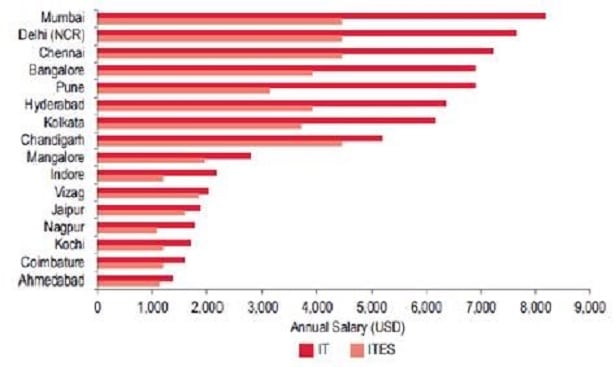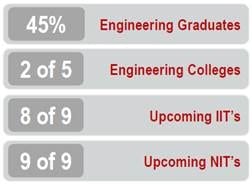
India’s tier-II and III cities are on the verge of a major change. Active deployment of RERA is less than a year in the future, and greater transparency and corporate governance will be required from developers in these cities too. This will help established developers operating there to attract private equity funding.
Many of these cities are already working towards tackling existing challenges like poor infrastructure and connectivity as well as lack of skilled manpower and IT-friendly policies. By 2020, 25 of every 100 IT professionals will hail from these cities.

Office rentals in Delhi and Mumbai are anything between 4-10 times higher than in tier-II, III cities, and housing is 2-3 times more expensive, comparatively.

However, there are advantages beyond the huge differential in wage costs and cost arbitrage. For example, the attrition rate in tier-II cities is slightly more than 11% compared to about 35% in the tier-I cities because of the more limited opportunities and the increasing preference to work in hometowns.
Work in progress
Tier-II, III cities currently lack in IT infrastructure, hospitality options and international connectivity (only a dozen have international flight connectivity, and only five have major sea ports).
Barely 10 of every 100 IT professionals currently emerge from these cities, and about 40% of the talent migrates to tier-I cities in search of better opportunities and career growth.
However, this scenario will change by 2020-22 as the Central Government’s flagship programmes like the Smart Cities mission, ‘Digital India’, ‘Skill India’, ‘Housing for all by 2022’ bear fruit. Moreover, more IT-friendly policies will see some of these cities pull rapidly ahead.
India’s economic outlook is now very favourable, and the country is poised for stronger growth in the coming years. It will all boil down to which of these cities manage to become more attractive for IT/ ITeS companies as well as start-ups. Developing a ‘pull-factor’ to make such companies migrate from their current favourites – Bangalore, Pune and Hyderabad – will dictate the level of success with which India’s tier-II, III unfold to their full potential.

